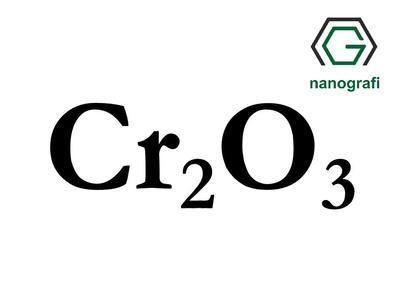Chromium Oxide Nanoparticles and Applications of Chromium Oxide Nanopowders
Chromium Oxide and It’s Properties

Chromium(III) oxide is the inorganic compound of the formula Cr2O3 which consist of Chromium metal and Oxygen. It is one of principal oxides of chromium and is used as a pigment. Because of its stability, it is commonly used pigment. It is used in paints, inks, and glasses.
Chromium Oxide Nanoparticles*
Application Areas of Chromium Oxide Nanoparticles

Chromium Oxide Nanoparticles are used as a pigment in paints, inks, and glasses. It is used as a precursor for magnetic pigments (chromium dioxide). Chromium Oxide Nanoparticles are also used a thermal spray material for protecting the underlying metal surface, and as an additive to corrosion-resistant and wear-resistant materials. Chromium Oxide nanoparticles are used in coatings of bearings, seals, orifices, and valve seals.
Technical Properties of Our Cr2O3(Chromium Oxide) Nanoparticles, 55nm, Purity 99.5+%, Hexagonal Product
| Purity % | 99.5+ |
| Morphology | nearly spherical |
| AVERAGE PARTICLE SIZE (nm): | 55.0 |
| SPECIFIC SURFACE AREA (m2/g): | 15.0 |
| Bulk Density (g/cm3) | 0.95 |
| True Density (g/cm3) | 5,3 |
You may find Cr2O3(Chromium Oxide) Nanoparticles, 55nm, Purity 99.5+%, Hexagonal from link given below:
Comments
Post a Comment